|
Sheepsfoot Bladed
Spydercos |
|
|
|
Mariner - ParaMedic
- MiniMariner - C14 Rescue - SnapIt EMT
- Remote Release EMT |
|
C35 Rescue Q - C45
Rescue Jr. - D'Allara Rescue - Ladybug II |
|
|
|
Over the years Spyderco has
produced a number of sheepsfoot bladed models. The first of these, and
only the second model to be introduced by Spydero is was the Mariner.
As you might guess from its name, it was aimed at those whose work or play
involves watercraft.
|
|
A spin-off from the Mariner, the
Paramedic was the first Spyderco aimed at "Save and Serve" professionals, a
group that would, in future years become an important market for them.
The Paramedic, while an excellent knife, was perhaps a bit too expensive, so
after the successful introduction of the FRN Delica and Endura, the C14
Rescue, an FRN version of the Mariner, was introduced.
|
|
|
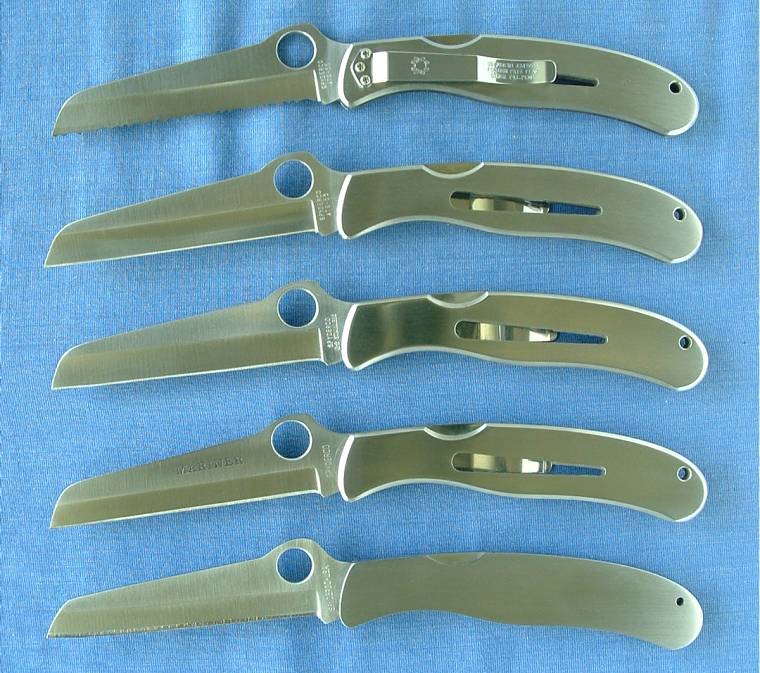 |
|
It's somehow
fitting that two of these "sea going" Spydercos crossed oceans to end up
in my collection. The middle one, a plain edge in G-2 (GIN-1) was
purchased from a fellow collector in Great Britain, and the second from the
bottom, an earlier plain edge with no steel markings but the model name
etched in the blade, came across the Pacific, courtesy of a good friend and fellow forumite, Daywalker.
Above them are a right hand PE and a left hand SE Mariner, both in ATS-55.
Bottom-most in the picture is a variation on the very early Mariner called the
Paramedic, this one in right hand plain edge. As with the original Mariners, the edges of the Paramedic
handle are not chamfered like those of the later knives above it. It
is disinguished from the Mariner by the lack of drying vents in the handles.
|
|
|
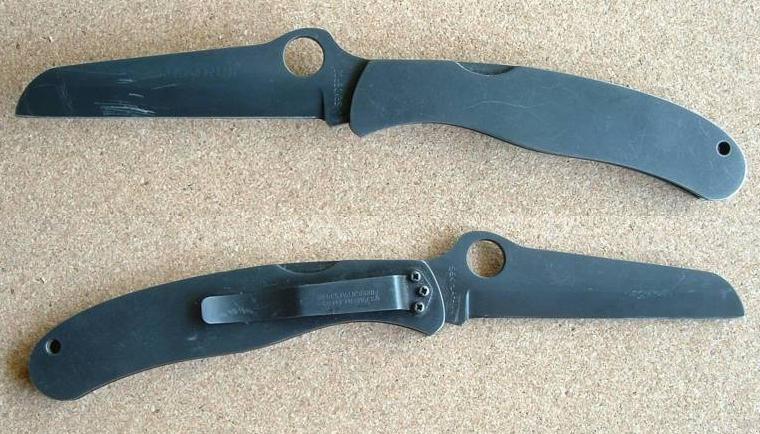 |
|
This very early black coated
Mariner is a recent addtion to my collection. |
 |
|
One noticeable difference
between the early Mariners and the ParaMedic is that both scales of the
Mariner were of equal thickness while the clip side scale of the ParaMedic
was thicker than the scale on the opposite side. |
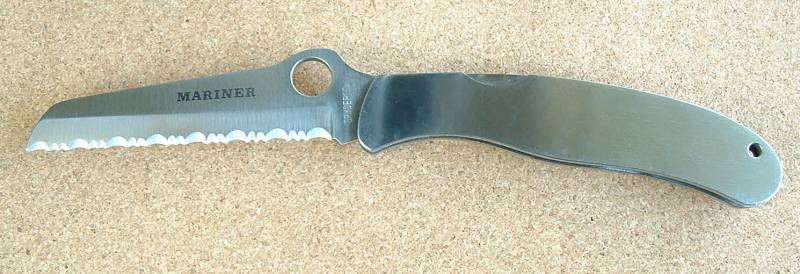 |
|
Another very early Mariner, this
one in SE. The Mariner was the first knife to use the "Spyderedge",
Spyderco's signature version of a serrated edge. It was chosen, at
least in part, because it was felt there might be negative reaction to the
combination of the more "aggressive" look projected by the serrated edge and
sharp tipped blade. |
 |
|
Yet another very early Mariner,
this one Left Handed with a serrated edge. In addition to
the clip being on the opposite side, the serrations and MARINER name
engraved on the blade are also the opposite of those on right handed
specimens. |
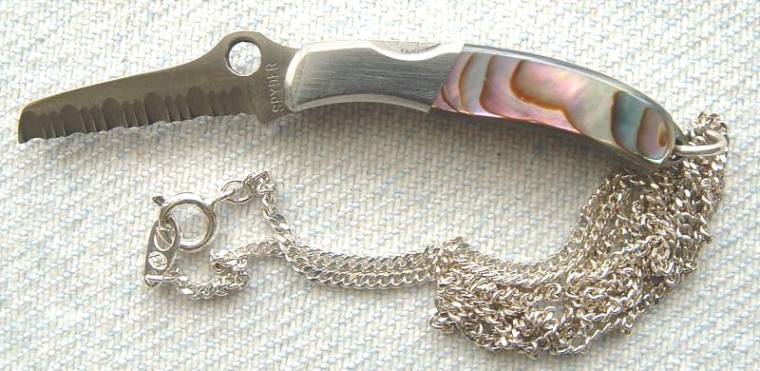 |
|
The Mini-Mariner is the smallest
knife ever produced by Spyderco, While fully functional it is really
too small to be considered anything but a piece of jewelry. The
abalone shell scales on this one show excellent color in the light. |
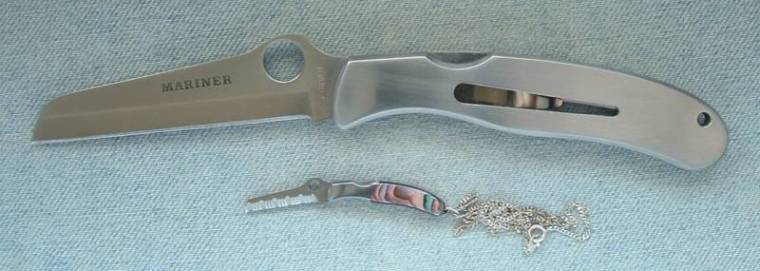 |
|
Mini and full size Mariners |
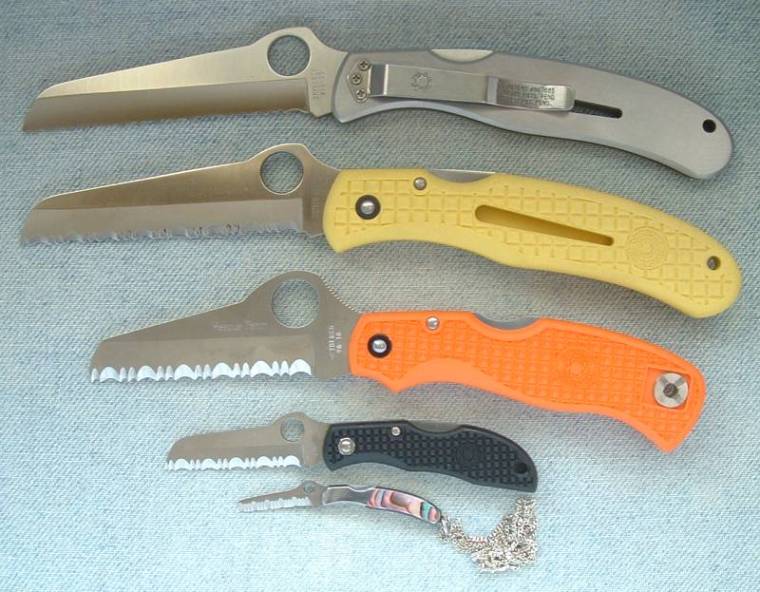 |
|
Spyderco has produced a wide
range of sizes in sheepsfoot bladed knives. |
|
Top to bottom: |
|
C02 - All Stainless Mariner |
|
C14 - Rescue, and early version,
in yellow FRN with integral clip and no steel markings |
|
C45 - 79mm Rescue - formerly
called the Rescue Jr. in VG-10 |
|
LBKII - Ladybug II |
|
3001 - Abalone
Mini-Mariner |
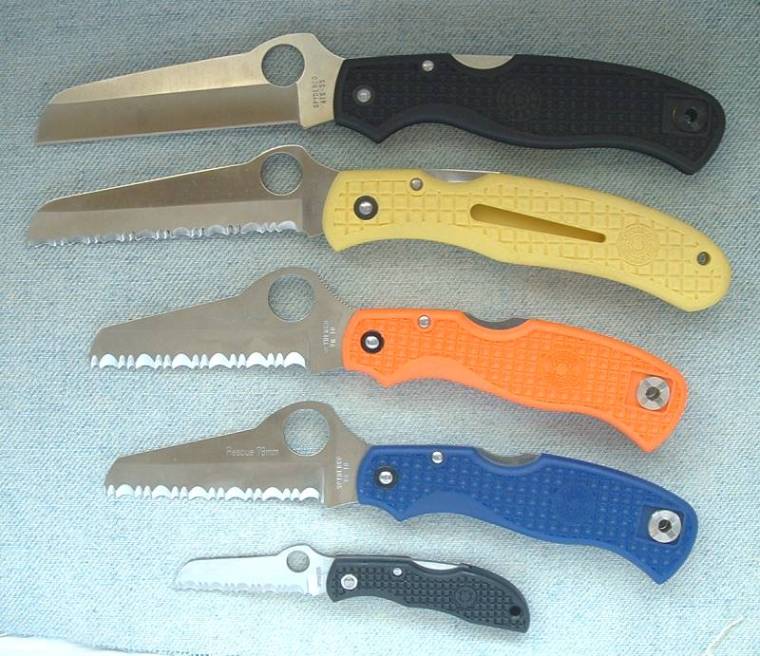 |
|
A range of FRN sheepsfoot bladed
Spydercos, the topmost plain edged Rescue in ATS-55 is the last version of
the C14 not called a "93mm" Rescue, but note how the handle has changed
between it and the very early yellow one below it. The clip is now
metal, attached with a barrel bolt and mountable for either right or left
hand carry. The handle is deeper, top to bottom, and has a 50/50
choil. Below it are current 79mm Rescues in blue and orange FRN with
VG-10 blades . The Ladybug II provides a key ring sized companion for
those who carry the larger Rescue models. |
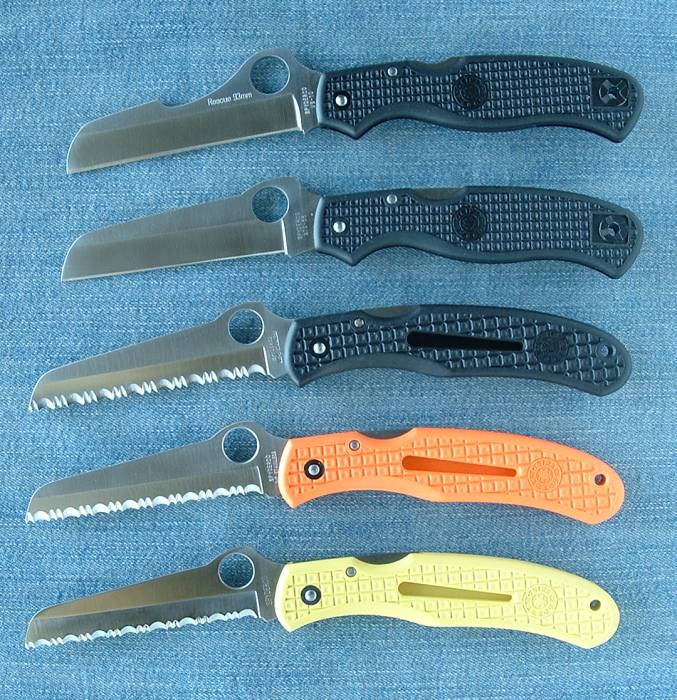 |
|
C14 Rescues through the years -
Top to Bottom |
|
2003 Version - Rescue 93mm -
VG-10 |
|
1999 Version - ATS-55 |
|
1996? Version - AUS-8 |
|
1993 Version - GIN-1 (marked
G-2) |
|
Pre 1992 Version - Rescue -
GIN-1 (but no steel marking on blade) |
|
Top knife in
the above picture is the latest variation on the C14, a plain edged version
of the 2003-04 style 93mm Rescue. Thumb hole has been enlarged to 14mm
for easier operation with gloved hands, traction grooves added to the thumb
ramp, and a forward finger position added to the spine for added control.
Unfortunately, in the process, the very usable 50/50 choil which, along with
the barrel bolt mounted ambidextrous clip, had been introduced on the 1999
version, got reduced to
the point where using it is flirting with disaster. The height of the
hump and angularity of the transition between forward spine and thumb ramp
was also increased While I personally like the forward finger
position, the user community this knife is aimed at, did not, nor did they
like the higher, more angular ramp. In response to their
dissatisfaction, the 2005 version, due out shortly, will eliminate the
forward finger notch, and return to a somewhat lower, more rounded hump
while retaining the 14mm hole. From where I sit, the good news is that
the 50/50 choil will also return. The Atlantic Salt, an H1 (super rust
proof steel) bladed spin-off of the C14 will share the '05 traits.
|
|
|
|
Pictured below, the Atlantic
Salt - H1 steel, yellow and black FRN, plain and serrated edges. |
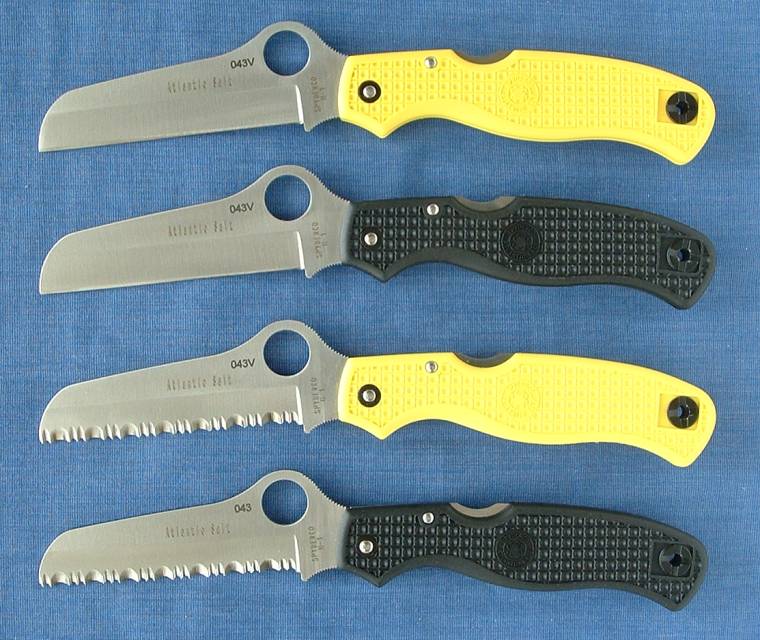 |
|
|
|
This Atlantic was
customized for me by Steve Rice (STR on the forums) in February of '06.
He did one heck of a job on it! Scales are stabilized Birdseye Maple
which I had purchased from Alpha Knife Supply and which was left over from
another project. |
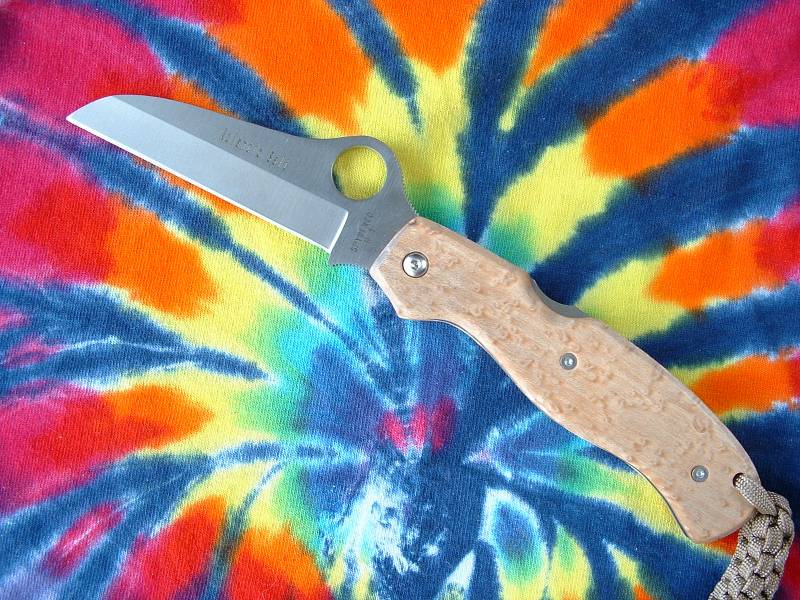 |
|
|
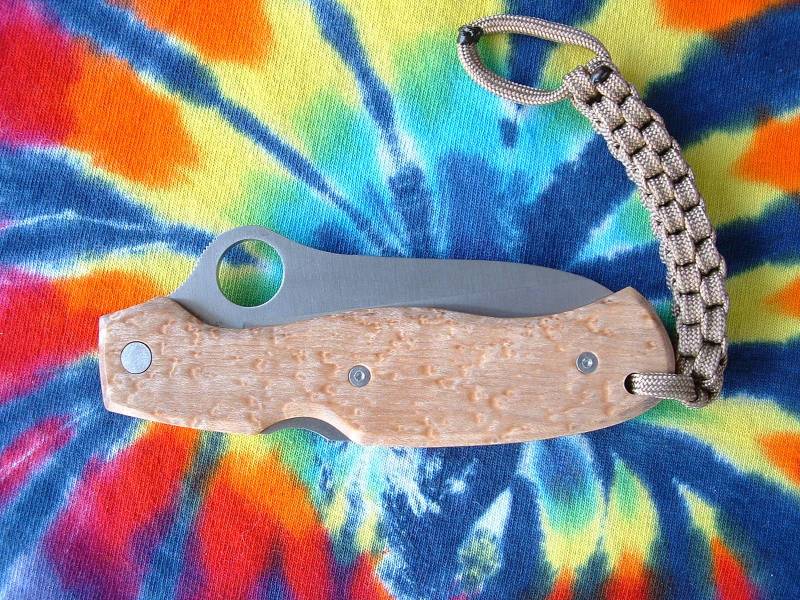 |
|
|
|
Below: The all Stainless
versions of the C14 Rescue and C45 Rescue Jr. shown with a Mariner for size
comparison. These apparently did not prove popular, as they
had a very short life and thus are fairly difficult to find. Steel is ATS-55 and, to the best
of my knowledge all were serrated edge. |
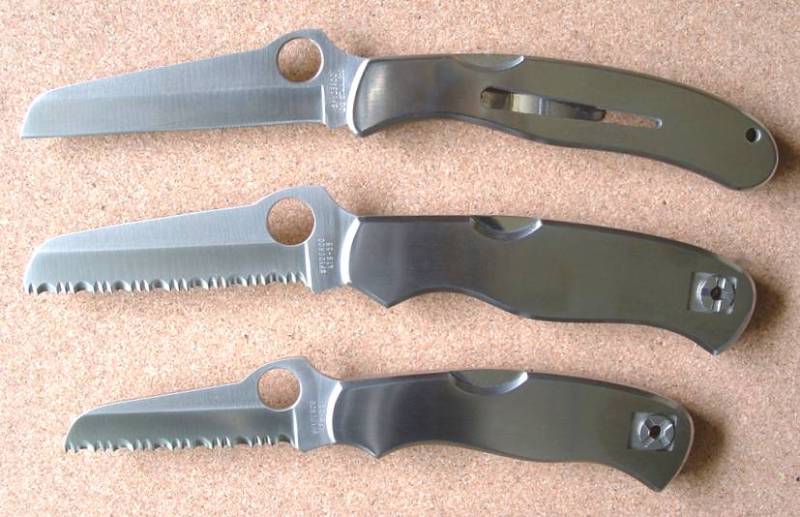 |
|
|
|
Below: comparison of
various models closed |
|
C02 - Mariner
|
C14 - Rescue "1999" version |
|
C45 - 79mm Rescue (Rescue Jr.)
|
C14 - 93mm Rescue "2003" version
|
|
C14 - Rescue - FRN Clip
version |
C89 - Atlantic Salt |
|
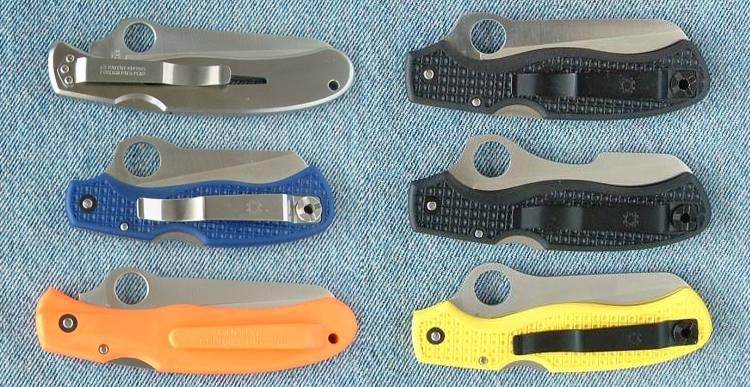 |
|
|
|
Below: Several C45 Rescue
Juniors including an all stainless ATS-55 version. |
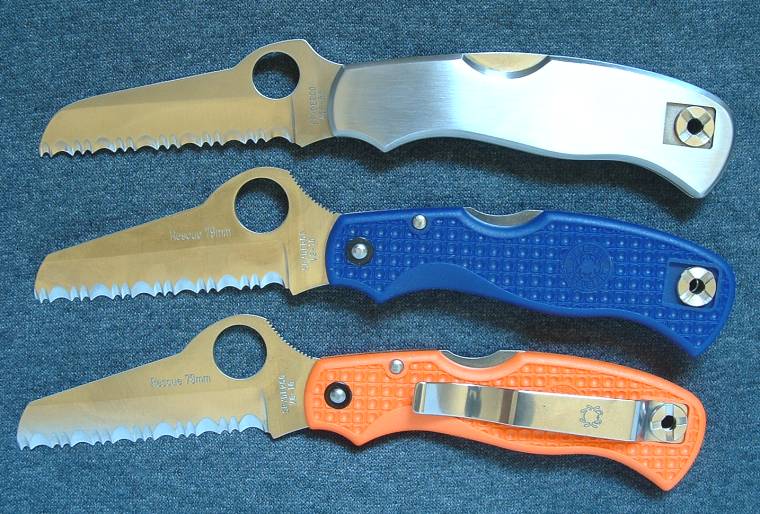 |
|
Below: An older FRN C45 Rescue
Jr. in ATS-55 - this one carries Collector's Club # 002 |
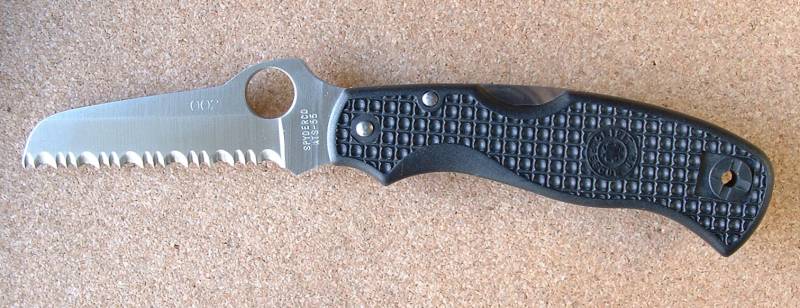 |
|
|
|
Below: All Stainless C14 and the
FRN version from the same (ATS-55) era. |
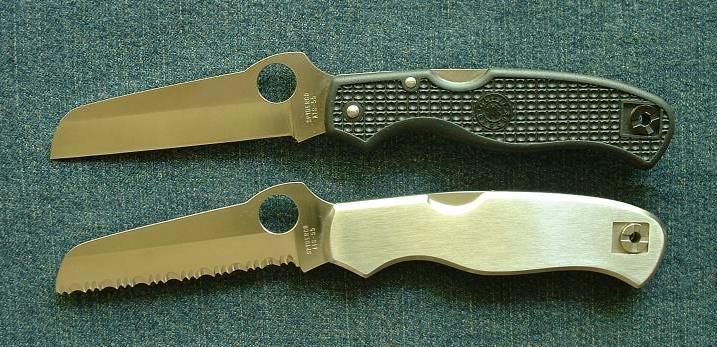 |
|
|
|
Pictured below is the sheepsfoot
variant on the Snap-It, called the EMT. Note the larger hole on
the orange version. At 15mm, it is the largest on any Spyderco model. |
|
|
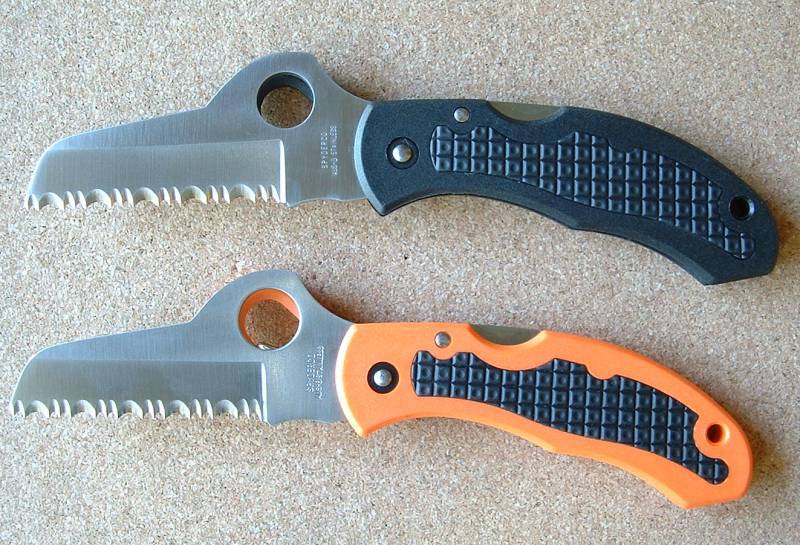 |
|
|
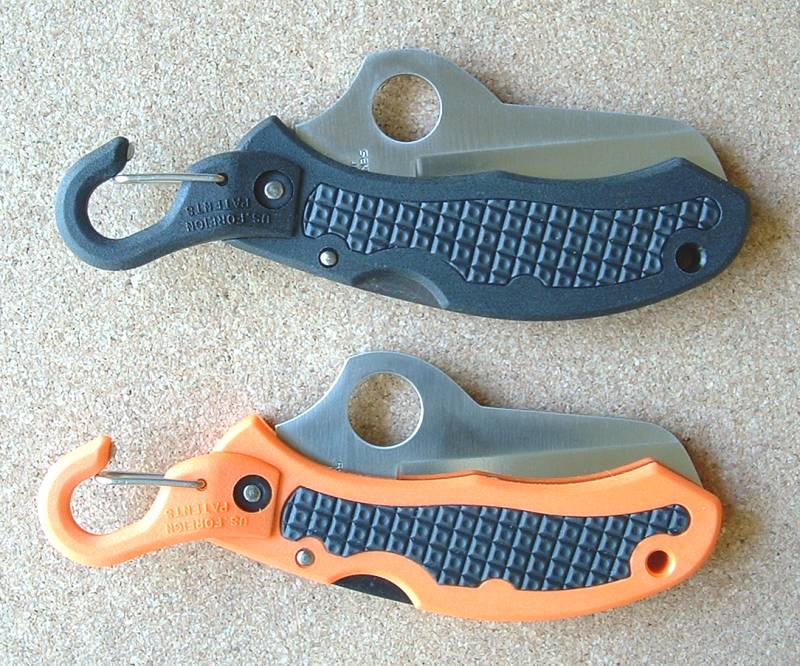 |
|
Perhaps even less common that
the SnapIt EMTs are the Remote Release EMTs pictured below. These,
like the Orange SnapIt EMT, have extra large 15mm thumb holes. |
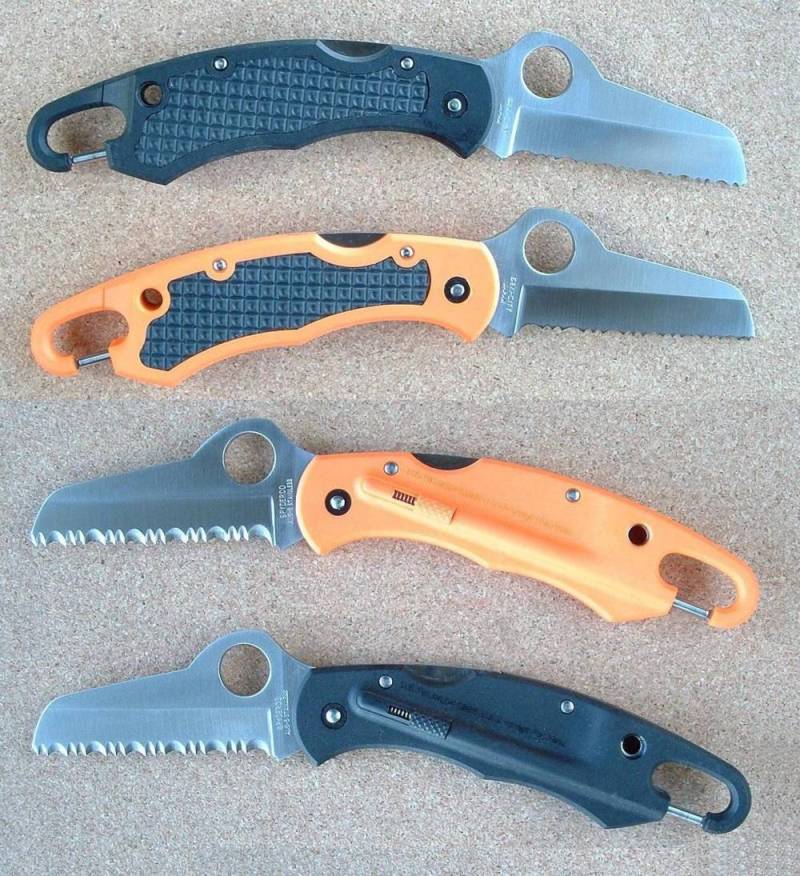 |
|
|
|
WTC Knife, which also served as the prototype
for the D'Allara Rescue. |
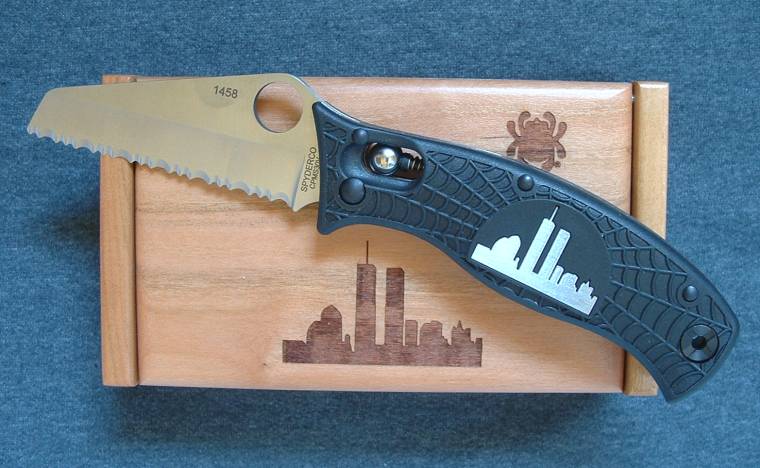 |
|
|
|
There was also a sheepsfoot bladed "Rescue Q".
Among the variations it came in were this one, made for the 1998 New York
Custom Knife Show |
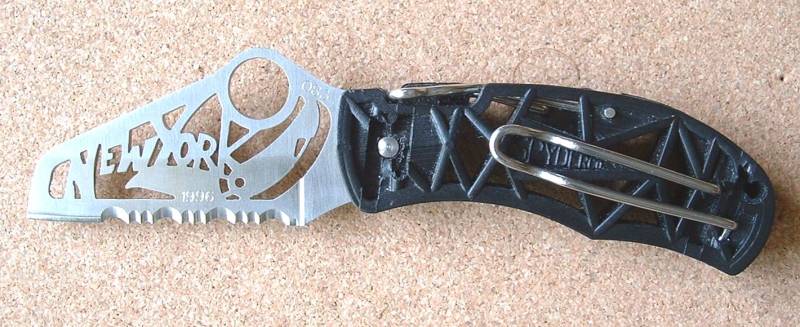 |
|
|
|
Another version was
made in very small numbers for Wilderness Medicine Outfitters in Colorado. |
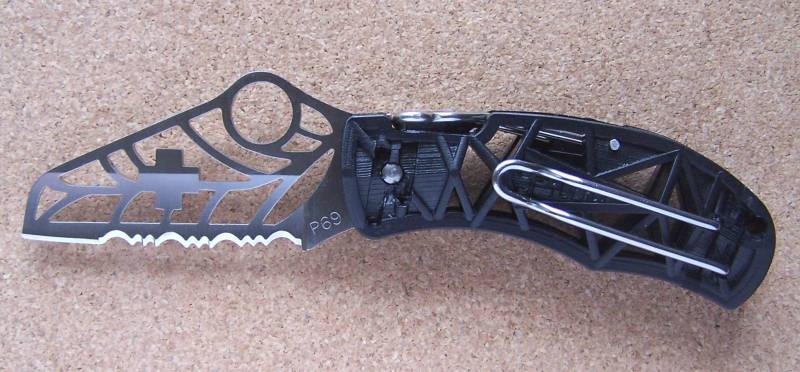 |
|
|
|
And yet another was this solid bladed four piece
"color Rescue" set. |
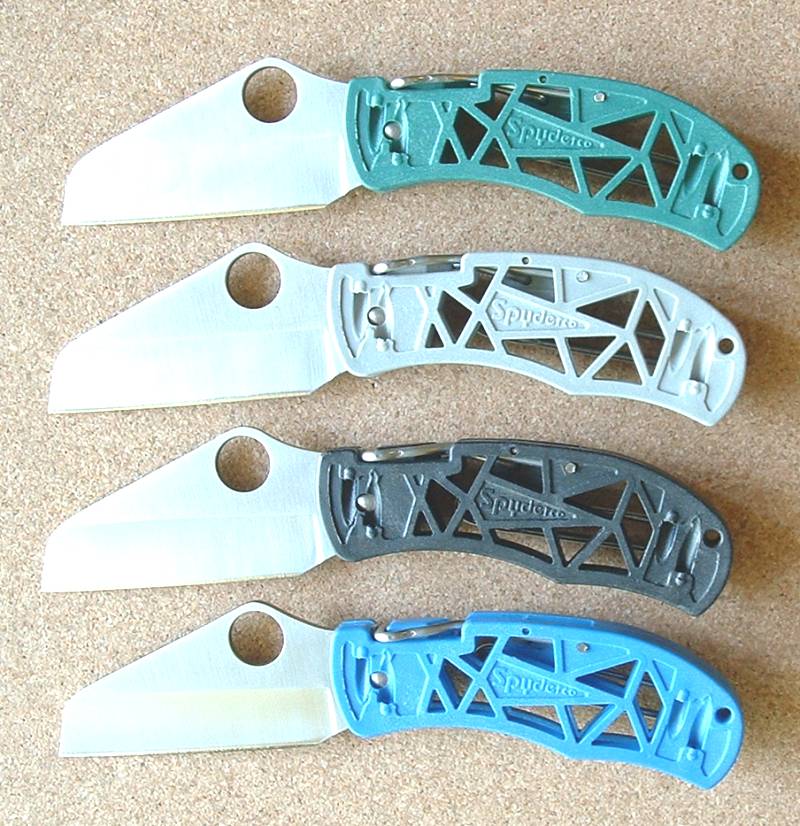 |
|
|
|
|
|
|
|
|
|
|
|
|
|
|
|
|
|
|
|
|
|
|






















